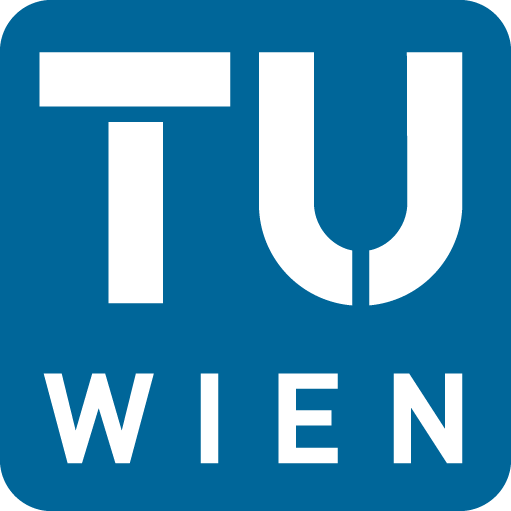DC Field
Value
Language
dc.contributor.author
Steinbach, Claudia
-
dc.contributor.author
Schmid, Alexander
-
dc.contributor.author
Nenning, Andreas
-
dc.contributor.author
Fahrnberger, Florian
-
dc.contributor.author
Hutter, Herbert
-
dc.contributor.author
Kubicek, Markus
-
dc.contributor.author
Fleig, Jürgen
-
dc.date.accessioned
2025-01-09T14:31:51Z
-
dc.date.available
2025-01-09T14:31:51Z
-
dc.date.issued
2024-07-18
-
dc.identifier.citation
<div class="csl-bib-body">
<div class="csl-entry">Steinbach, C., Schmid, A., Nenning, A., Fahrnberger, F., Hutter, H., Kubicek, M., & Fleig, J. (2024, July 18). <i>Prediction of space charges at SrTiO3|mixed ionic and electronic oxide heterojunctions from defect chemistry</i> [Conference Presentation]. 24th International conference on solid state ionics, London, United Kingdom of Great Britain and Northern Ireland (the).</div>
</div>
-
dc.identifier.uri
http://hdl.handle.net/20.500.12708/208260
-
dc.description.abstract
Solid oxide cells are promising devices for decarbonizing the energy economy, as they offer efficient energy storage and generate green alternatives to fossil fuels. In such electrochemical cells, the interfaces between various components are vital for the charge transfer kinetics and therefore for the overall performance of the cell. Although there are well-established models describing interfacial space charge regions for either electronic or ionic species, models describing space charge regions for both ionic and electronic charge carriers are far less developed. The latter type of space charge is, for example, present in high temperature solid oxide solar cells based on the interfaces between SrTiO3 (STO) and other mixed ionic and electronic conductors (MIECs) [1]. Experiments yield photovoltages up to > 1 V, but the interplay of ionic and electronic defects in determining the corresponding space charge potential is not truly understood.
This work focuses on the investigation of space charge regions between highly electronic conducting MIECs and STO. YBa2Cu3O7-δ (YBCO), La0.6Sr0.4FeO3-δ (LSF), La0.6Sr0.4CoO3-δ (LSC), La0.65Sr0.35MnO3-δ (LSM) and La0.9Sr0.1CrO3-δ (LSCr) thin films were grown by pulsed laser deposition on (nominally) undoped STO single crystals. The resulting interfacial space charge zones are investigated by several approaches: First and most prominently, the resistances of space charge regions at the MIEC│MIEC interfaces were determined in a broad range of oxygen partial pressures at 500°C by means of electrochemical impedance spectroscopy. According to these measurements, investigated materials are distinguishable into MIECs leading to very pronounced space charges (LSM, LSCr), MIECs with moderate space charges (LSF, LSC), and oxides that do not lead to any measurable space charge resistance (YBCO). Interestingly, experiments of nanometer thin interlayers of LSM revealed that already a layer thickness of a single unit cell leads to the formation of a space charge with properties very similar to much thicker films. In a second approach, 18O tracer diffusion across the corresponding interfaces revealed information on the depletion of ionic defects (oxygen vacancies). Third, work function measurements by means of X-ray photoelectron spectroscopy were performed for LSCr, LSM and LSF layers on STO, which strongly support the space charge data obtained from impedance measurements. The same is true for the fourth approach, the analysis of space charges by means of photovoltages measured upon UV illumination of these MIEC│STO hetero-interfaces [1]. Finally, a model is developed, which correlates the ionic and electronic driving forces determining the space charge potentials. This model predicts a relation between space charge potentials and reducibilities of the MIECs, i.e. the transition points in Brouwer diagrams. Comparison with literature data on defect energies indeed confirms the predicted trends.
[1] Morgenbesser, M.; Schmid, A.; Viernstein, A.; de Dios Sirvent, J.; Chiabrera, F.; Bodenmüller, N.; Taibl, S.; Kubicek, M.; Baiutti, F.; Tarancon, A.; Fleig, J. SrTiO3 based high temperature solid oxide solar cells: Photovoltages, photocurrents and mechanistic insight. Solid State Ionics 2021, 368, 115700.
en
dc.language.iso
en
-
dc.subject
space charge
en
dc.subject
SrTiO3
en
dc.subject
impedance measurements
en
dc.title
Prediction of space charges at SrTiO3|mixed ionic and electronic oxide heterojunctions from defect chemistry
en
dc.type
Presentation
en
dc.type
Vortrag
de
dc.type.category
Conference Presentation
-
tuw.researchTopic.id
M1
-
tuw.researchTopic.name
Surfaces and Interfaces
-
tuw.researchTopic.value
100
-
tuw.publication.orgunit
E164 - Institut für Chemische Technologien und Analytik
-
tuw.author.orcid
0000-0002-9610-8205
-
tuw.author.orcid
0000-0002-4457-4730
-
tuw.author.orcid
0000-0001-9313-3731
-
tuw.author.orcid
0009-0006-7060-6691
-
tuw.author.orcid
0000-0001-6623-9805
-
tuw.author.orcid
0000-0002-8401-6717
-
tuw.event.name
24th International conference on solid state ionics
en
tuw.event.startdate
15-07-2024
-
tuw.event.enddate
19-07-2024
-
tuw.event.online
On Site
-
tuw.event.type
Event for scientific audience
-
tuw.event.place
London
-
tuw.event.country
GB
-
tuw.event.presenter
Steinbach, Claudia
-
wb.sciencebranch
Chemie
-
wb.sciencebranch.oefos
1040
-
wb.sciencebranch.value
100
-
item.openairecristype
http://purl.org/coar/resource_type/c_18cp
-
item.openairetype
conference paper not in proceedings
-
item.cerifentitytype
Publications
-
item.fulltext
no Fulltext
-
item.languageiso639-1
en
-
item.grantfulltext
none
-
crisitem.author.dept
E164-04-3 - Forschungsgruppe Festkörperionik
-
crisitem.author.dept
E164-04-3 - Forschungsgruppe Festkörperionik
-
crisitem.author.dept
E164-04-3 - Forschungsgruppe Festkörperionik
-
crisitem.author.dept
E164-01-2 - Forschungsgruppe Oberflächen-, Spurenanalytik und Chemometrie
-
crisitem.author.dept
E164-01-2 - Forschungsgruppe Oberflächen-, Spurenanalytik und Chemometrie
-
crisitem.author.dept
E164-04-3 - Forschungsgruppe Festkörperionik
-
crisitem.author.dept
E164-04 - Forschungsbereich Technische Elektrochemie
-
crisitem.author.orcid
0000-0002-9610-8205
-
crisitem.author.orcid
0000-0002-4457-4730
-
crisitem.author.orcid
0000-0001-9313-3731
-
crisitem.author.orcid
0009-0006-7060-6691
-
crisitem.author.orcid
0000-0001-6623-9805
-
crisitem.author.orcid
0000-0002-8401-6717
-
crisitem.author.parentorg
E164-04 - Forschungsbereich Technische Elektrochemie
-
crisitem.author.parentorg
E164-04 - Forschungsbereich Technische Elektrochemie
-
crisitem.author.parentorg
E164-04 - Forschungsbereich Technische Elektrochemie
-
crisitem.author.parentorg
E164-01 - Forschungsbereich Imaging und Instrumentelle Analytische Chemie
-
crisitem.author.parentorg
E164-01 - Forschungsbereich Imaging und Instrumentelle Analytische Chemie
-
crisitem.author.parentorg
E164-04 - Forschungsbereich Technische Elektrochemie
-
crisitem.author.parentorg
E164 - Institut für Chemische Technologien und Analytik
-
Appears in Collections:

